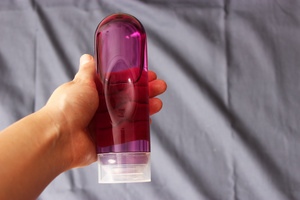One of the most effective forms of birth control available today is Nexplanon®. This is a type of birth control implant that is inserted in the skin of your arm, where it releases hormones that prevent pregnancy.
Many women choose it because it provides protection for as long as three years, making it a good option for those who might be prone to forgetting to take daily birth control pills. Read on to learn more about whether Nexplanon® may be an effective birth control option for you.
How Does Nexplanon® Prevent Pregnancy?

Nexplanon® is an implant that is in the form of a small and thin rod that is roughly the size of a matchstick. Your doctor inserts it under the skin in your upper arm. Once in place, it releases the hormone progestin, which can prevent you from getting pregnant in two ways. First, it thickens your cervical mucus, preventing sperm from swimming through it to reach your egg. Second, it also stops eggs from leaving the ovaries, meaning there will not be an egg for any sperm that gets through to fertilize.
How Effective Is It?
Nexplanon® is more than 99 percent effective in preventing pregnancy. On average, less than one out of every 100 women who use it will become pregnant. The main reason for its strong efficacy is the fact that it is essentially foolproof. Because it is placed inside your arm, you cannot use it incorrectly or forget to use it.
How Long Does Nexplanon® Offer Protection?
Nexplanon® can last for as long as three years, which means it is a “set it and forget it” approach. However, if you decide to get pregnant in the meantime or wish to change your form of contraception, your doctor simply removes the implant, and you should be able to get pregnant.
If your implant is inserted within the first five days of your menstrual cycle, you will be protected from getting pregnant immediately. If you get it at any other time in your cycle, however, you will need to use a different type of birth control during the first week. After that time, your implant will begin to offer protection that can last for up to three years. Be sure to follow your doctor’s advice on when it should take effect.
Does Nexplanon® Protect Against Sexually Transmitted Diseases?

Although Nexplanon® is a very effective way to prevent pregnancy, it is important to understand that it does not provide any degree of protection against sexually transmitted diseases. You will still need to use condoms each time you have sex to avoid spreading or contracting sexually transmitted diseases.
How Is the Implant Inserted?
Once your doctor determines that Nexplanon® is a suitable method of birth control for you, you will be given a shot that numbs a small area of your arm. Then, an inserter tool is used to slide the birth control implant under your skin. This process takes only a few minutes. You may feel some stinging or a small pinch when you receive the numbing shot, but you should not be able to feel anything while the implant is being inserted.
Once the pain medication has worn off, you may notice some aching in your arm where the implant was inserted, but it tends to go away quickly. Although you may experience some swelling, bruising, or tenderness around the implant site, they should subside in a week or two.
Does It Have Any Side Effects?
Although some people experience side effects from the hormones in Nexplanon®, many women use it without any problems. The most common side effect is spotting in the form of brown discharge or light bleeding, particularly during the first six to twelve months. For some, it can also cause long-term spotting or irregular periods. However, for most, it will make their period significantly lighter or go away altogether. Once your body gets used to the implant, these side effects will usually go away.
Some of the less common side effects include weight gain, headaches, nausea, breast pain, infections at the implant site, and ovarian cysts.
Doctors recommend giving your body a few months to adjust to the hormones in Nexplanon®. However, if you are unhappy with it after a few months, discuss your concerns with your doctor, who can help you determine if a different method of birth control may be more appropriate for you.
What Happens After Nexplanon® Is Removed?

Having your birth control implant removed spurs a change in hormones, which always carries the possibility of creating temporary side effects. Your body should eventually return to the way it was before you had the implant. This means that if the implant caused your period to stop, it will eventually come back, although it may take a few months for it to return to your usual cycle.
Keep in mind that you can get pregnant immediately after the implant has been removed from your body, so if you do not wish to become pregnant, you need to use another method of birth control.
Reach Out to the Women’s Health-Care Team
If you are sexually active and wish to avoid pregnancy, contact the women’s health-care team at Raleigh Gynecology & Wellness. We can help you determine which method of contraception best meets your needs and suits your lifestyle.












